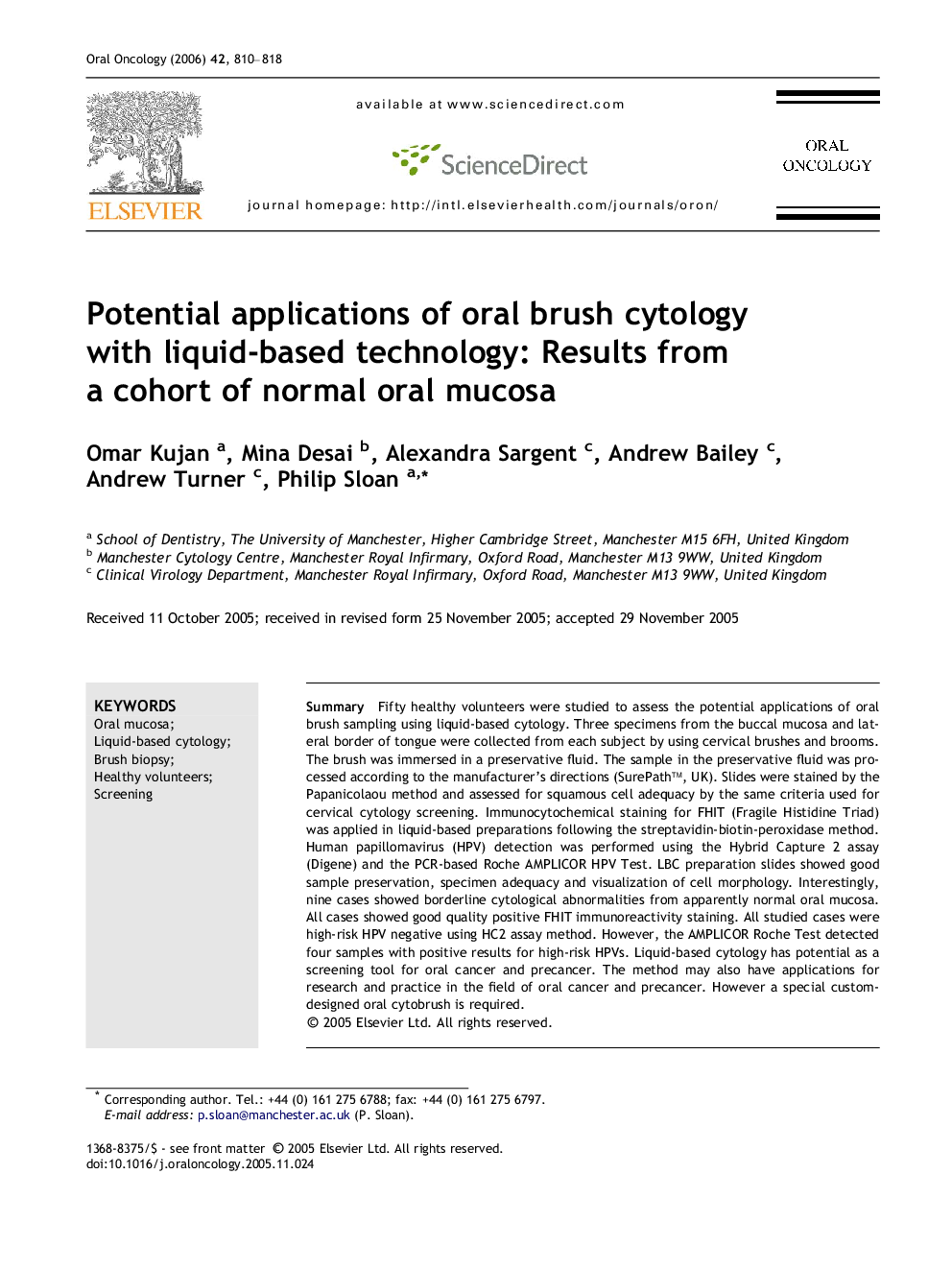| Article ID | Journal | Published Year | Pages | File Type |
|---|---|---|---|---|
| 3165984 | Oral Oncology | 2006 | 9 Pages |
SummaryFifty healthy volunteers were studied to assess the potential applications of oral brush sampling using liquid-based cytology. Three specimens from the buccal mucosa and lateral border of tongue were collected from each subject by using cervical brushes and brooms. The brush was immersed in a preservative fluid. The sample in the preservative fluid was processed according to the manufacturer’s directions (SurePath™, UK). Slides were stained by the Papanicolaou method and assessed for squamous cell adequacy by the same criteria used for cervical cytology screening. Immunocytochemical staining for FHIT (Fragile Histidine Triad) was applied in liquid-based preparations following the streptavidin-biotin-peroxidase method. Human papillomavirus (HPV) detection was performed using the Hybrid Capture 2 assay (Digene) and the PCR-based Roche AMPLICOR HPV Test. LBC preparation slides showed good sample preservation, specimen adequacy and visualization of cell morphology. Interestingly, nine cases showed borderline cytological abnormalities from apparently normal oral mucosa. All cases showed good quality positive FHIT immunoreactivity staining. All studied cases were high-risk HPV negative using HC2 assay method. However, the AMPLICOR Roche Test detected four samples with positive results for high-risk HPVs. Liquid-based cytology has potential as a screening tool for oral cancer and precancer. The method may also have applications for research and practice in the field of oral cancer and precancer. However a special custom-designed oral cytobrush is required.
